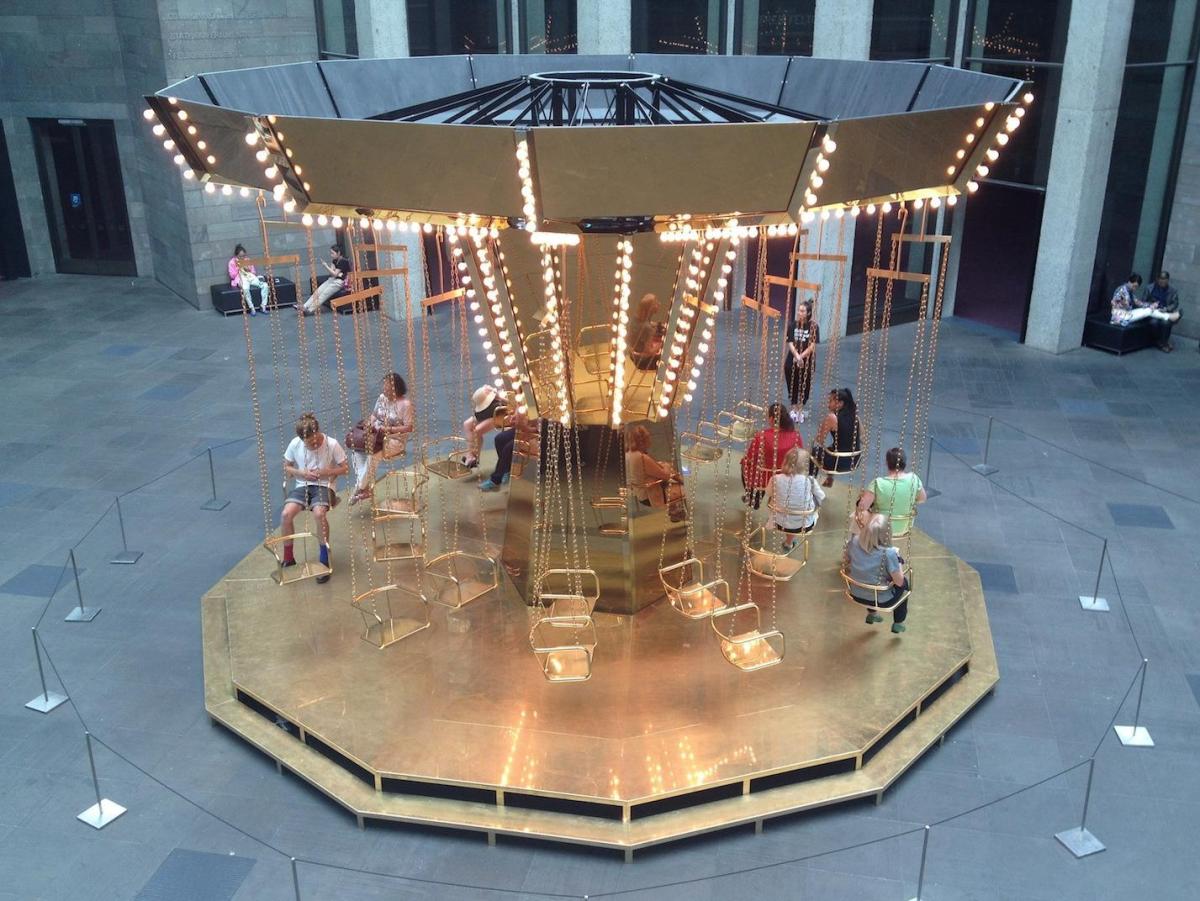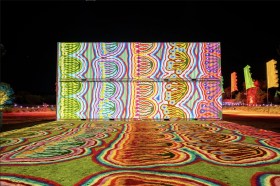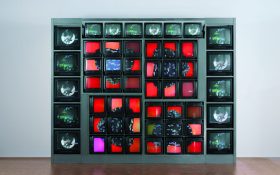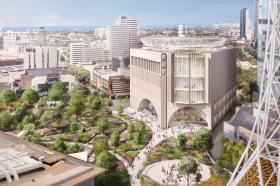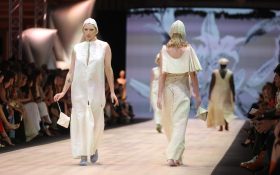Carsten Höller’s Golden Mirror Carousel (2014) presented this year in the National Gallery of Victoria forecourt; photo Gina Fairley
Nick Mitzevich, Director of Art Gallery of South Australia has made no secret of his ambition: ‘You know I love the word popular – there is nothing wrong with being popular.’
He added with a more serious tone: ‘You have to be ambitious in how you interact with a city, with the culture in the country, and your audience. Australian art needs people to be ambitious.’
In 2013, The Economist reported that there were ‘at least 55,000 museums across the world, more than double the number 20 years ago. And new ones are being built every day, especially in China, where more than 450 were opened last year.’
With that embrace comes two things: competition and democratisation.
No longer are our museums silent hallowed halls – walking into the National Gallery of Victoria, the Art Gallery of NSW or Brisbane’s Gallery of Modern Art on a weekend, for example, their forecourts and long galleries are bustling with families, he aged, selfie-obsessed teenagers, and guide-clutching tourists.
Museums have never been so popular as they are now.
Each year, The Art Newspaper pulls together data from over 500 museums and galleries globally and more than 1,800 exhibitions to create a top 100, ranked exclusively on attendance.
Some purists have asked whether the pendulum has swung too far in the chase for attendance figures and the sponsorship dollar? Has programming become unbalanced?
Tim Reynolds, Director of the National Museum of Computing, was quoted in an British article last year: ‘The tension in reconciling what the museum feels duty-bound to present with what consumers show that they want, is likely to lead to an even greater emphasis on entertainment.’
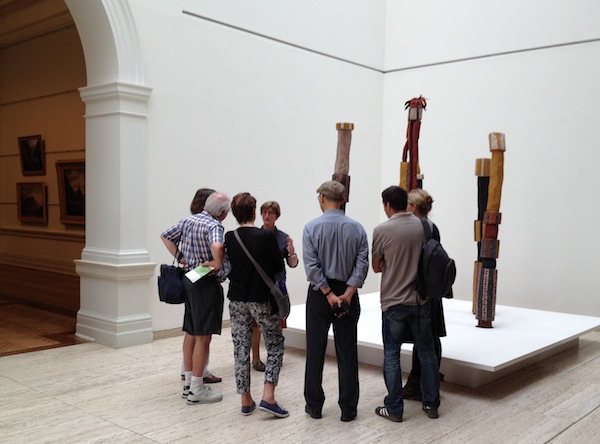
A guided tour at the AGNSW; photo Gina Fairley
Beyond the façade
Kim McKay, Director of the Australian Museum, is a great proponent of museums being outward facing. She announced to colleagues at this year’s Museums Australia Conference: ‘I wanted to make us more transparent so people see into the museum; to make it more inviting and contemporary.’
McKay is leading the Museum through a change in its façade from College Street to William Street Sydney, with the addition of what she describes as a ‘big glass box as our entry’, creating something that communicates through the architecture.
It is not a new idea but one that speaks of a savvy and necessary branding of the museum in our times.
In the last two decades we have seen museums globally become architecture-branded destinations. First was I.M Pei glass pyramid that transformed The Louvre’s façade, then Frank Gerhy’s Guggenheim Museum Bilboa, which transformed a flagging local economy. This trend has altered the psyche of the museum as an edifice.
That has moved beyond the façade with a flourishing of hip museum cafes, pop-up gallery shops and interactive technology-driven didactics, all aimed at expanding visitors.
Programming has also shifted, and while we all like a good coffee or a novel “creative” gift for a friend, juxtaposing a merry-go-round or slippery slide with your “Art” has caught the ire of some as going too far. But does it? Surely such artwork tap into the zeitgeist of the day as does all “good art”.
The popularity of the “blockbuster exhibition” of the 1990s – trophy imports from the world’s leading art museums such as the Louvre, Heritage, Prado, the V&A and Metropolitan Museum – a term hardly raised these days embrace as normal museum practice; or the insertion of “young viewer’s activities” within the exhibition space, first scorned as turning the gallery into a kiddies creche but now deeply celebrated – attitudes soften.
We have become more tolerant of rides, cars, cartoons, toys, jewellery, Lego, and the all time winner, fashion, in our temples of high art.
Museums need visitors, and they need to be more creative in their programming and marketing – not to mention their ability to attract funding – is the only thing that will sustain their future. If that means having a fashion show every other year, so be it. We may even expanded the value of our museums in a broader public context as they reinvent themselves in sync with today’s “entertainment-driven” audience.
